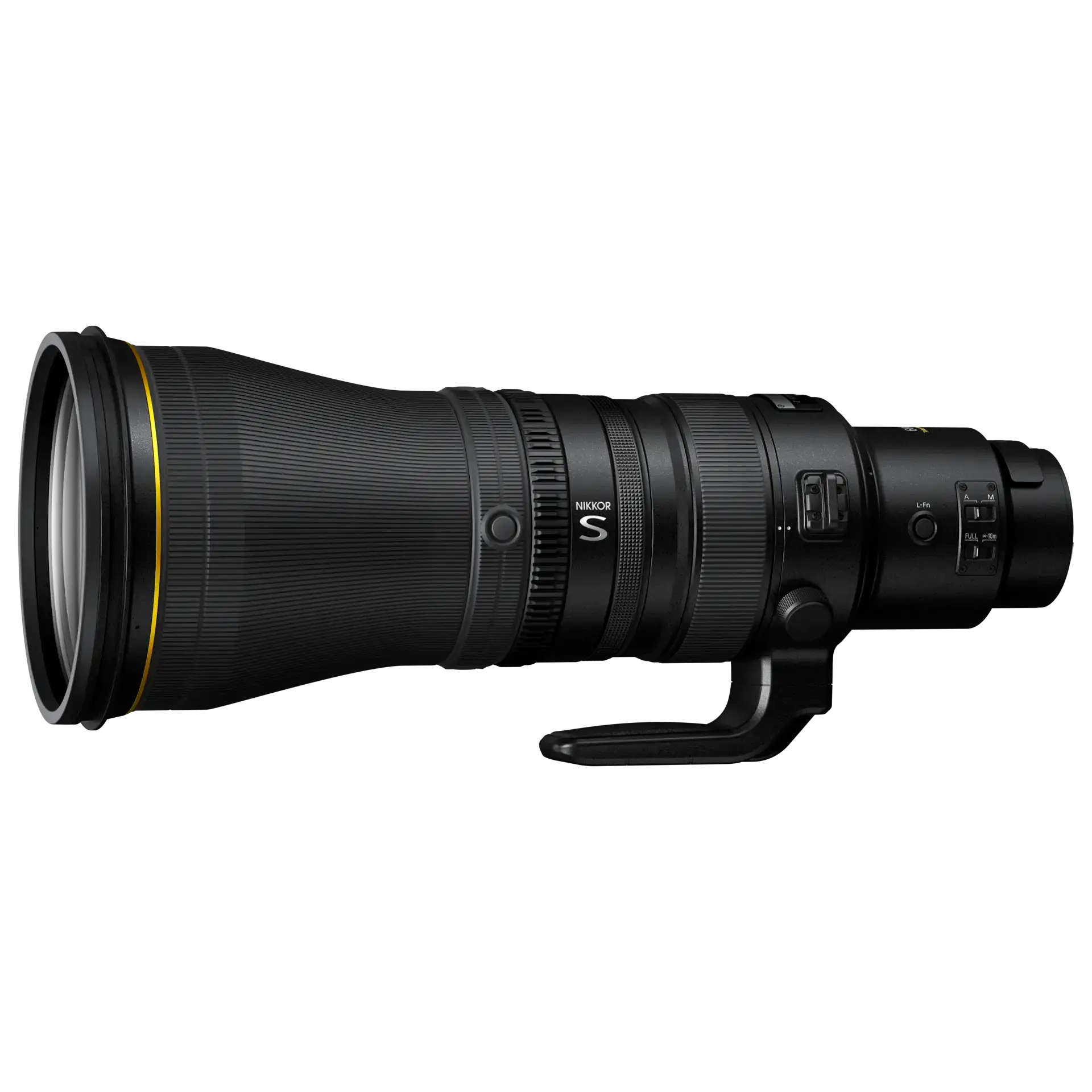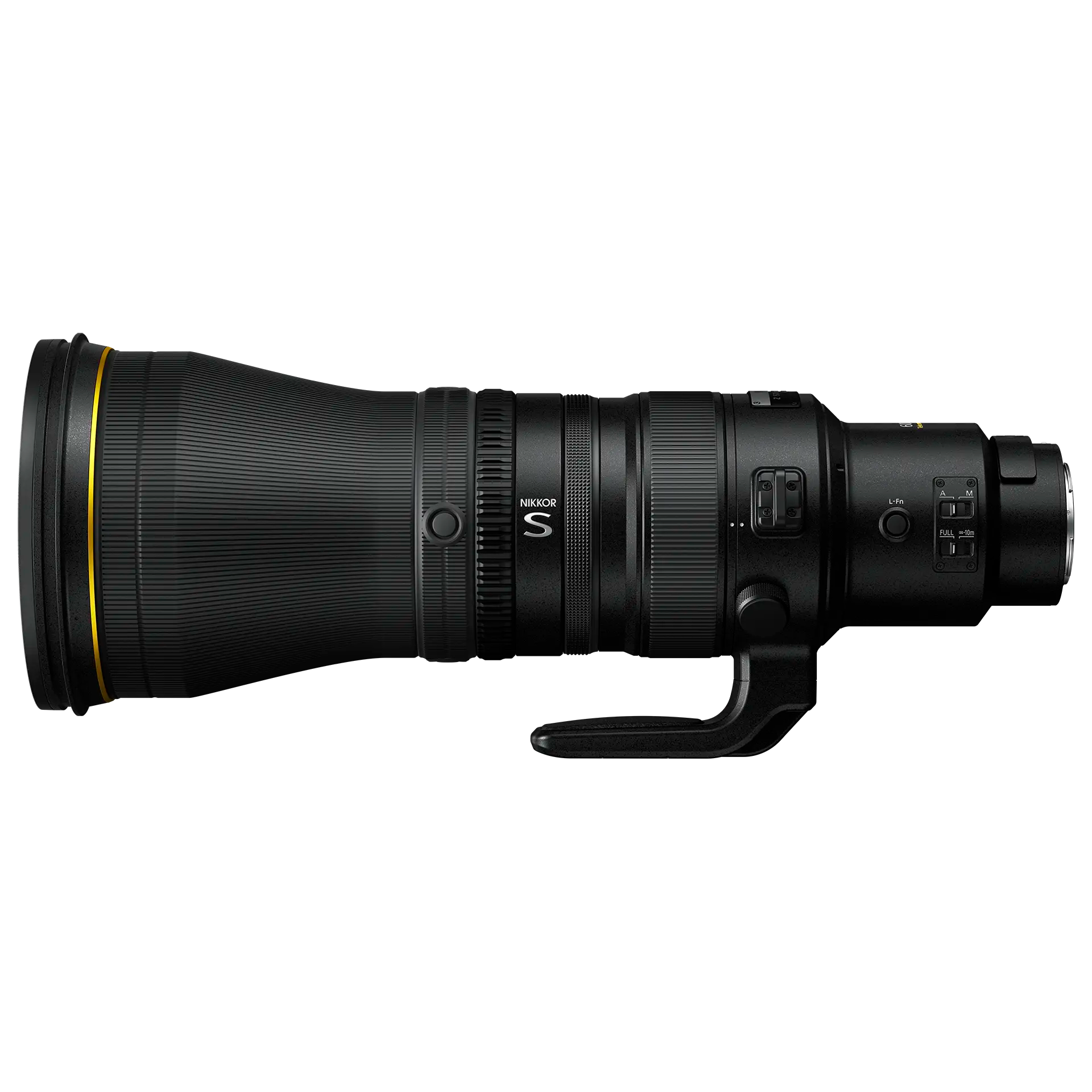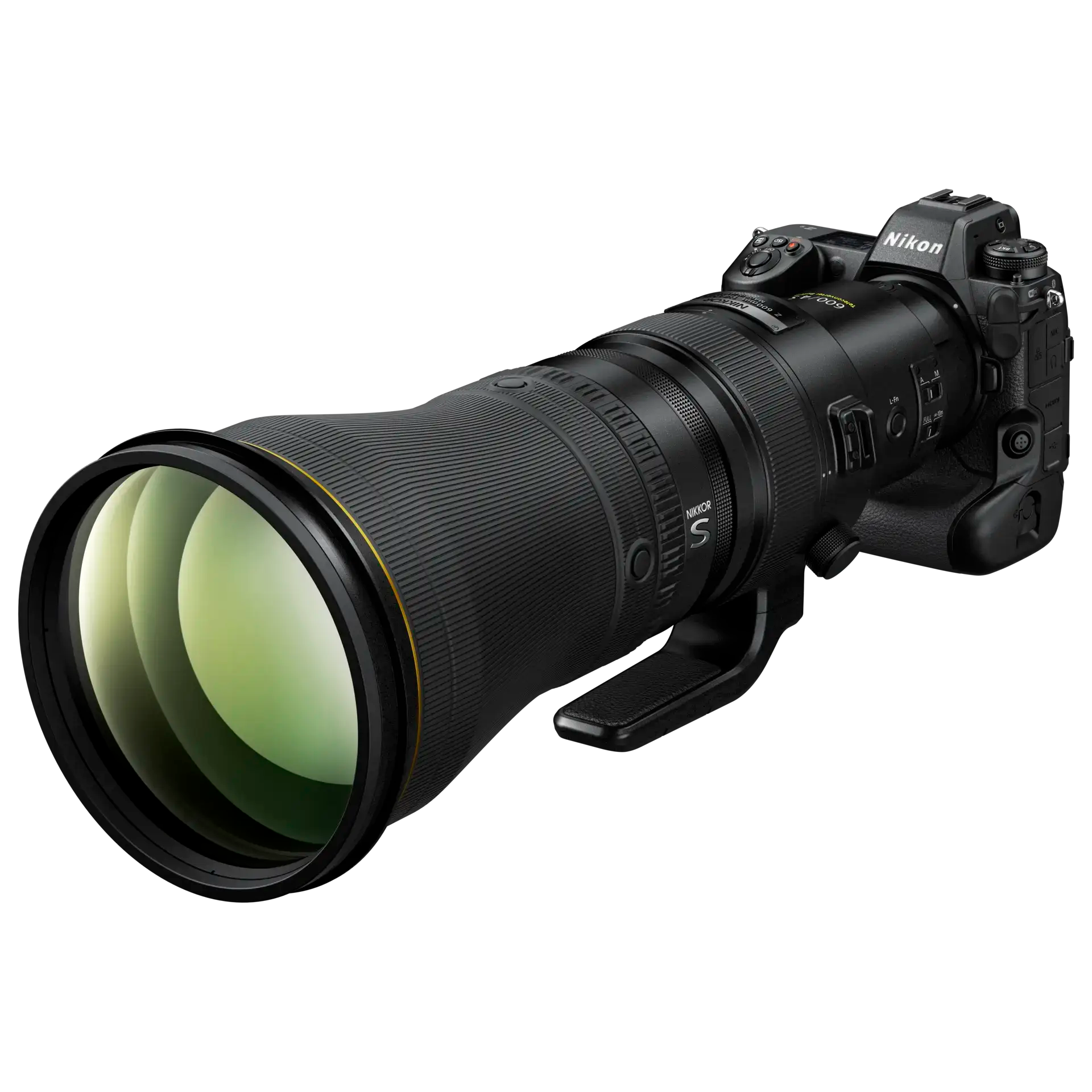Product Description
Nikon NIKKOR Z 600mm f/4 TC VR S Lens
The Nikon NIKKOR Z 600mm f/4 TC VR S Lens is a super-telephoto prime lens that combines outstanding reach, fast autofocus, and advanced image stabilisation. Ideal for sports and wildlife photography, this lens offers a bright f/4 aperture and a built-in 1.4x teleconverter for quick switching to 840mm f/5.6, making it versatile and powerful for professional use.

Key Features:
- Z-Mount Lens/FX Format: Designed for full-frame Nikon Z-mount mirrorless cameras.
- Built-In 1.4x Teleconverter: Instantly switch to 840mm by flipping a switch.
- Silky Swift VCM Autofocus System: Fast and accurate autofocus with minimal vibrations.
- 5.5-Stop VR Image Stabilization: Enables handheld shooting with reduced camera shake.
- Super ED, ED, Fluorite, and SR Elements: Reduces chromatic aberrations for sharp, clear images.
- Meso Amorphous and ARNEO Coatings: Superior anti-reflective coatings to reduce ghosting and flare.
- Customizable Fn and Memory Set Buttons: Easily store and recall focus positions and settings.
- Weather-Sealed Design: Dust and moisture-resistant for use in challenging environments.
- Fluorine Coating: Protects lens elements from dirt and makes cleaning easier.

Built-In 1.4x Teleconverter
The NIKKOR Z 600mm f/4 TC VR S features a built-in 1.4x teleconverter, allowing photographers to quickly switch from 600mm to 840mm with a simple flip of a switch. This integrated design ensures optimum optical performance and maintains the lens's weather sealing, reducing the chance of dust or dirt entering the lens when changing focal lengths.

S-Line Optics for Superior Image Quality
With a fast f/4 maximum aperture, the lens excels in low-light conditions and offers impressive depth of field control for subject isolation. It incorporates advanced optical elements, including two ED and one Super ED glass elements, as well as fluorite and SR (short-wavelength refractive) elements, to minimise chromatic aberrations and colour fringing, ensuring pin-sharp, high-resolution images with excellent colour accuracy.

Refined Anti-Glare Coatings
The lens features Nikon's newly developed Meso Amorphous Coat, which outperforms the Nano Crystal Coat in terms of reducing reflections from diagonal light sources and matches the ARNEO Coat for vertical light. These coatings, along with Nano Crystal Coat, provide comprehensive anti-glare protection, helping to reduce ghosting and flare even when shooting in challenging lighting conditions.

Silky Swift VCM Autofocus System
The innovative Silky Swift Voice Coil Motor (VCM) offers smooth and fast autofocus, using magnets to move the focusing groups with minimal vibrations. This system is not only silent, making it ideal for video work, but also reduces focus breathing for more consistent compositions when focusing. Full-time manual focus override and an internal focusing design further enhance the lens's responsiveness and ease of use.

Advanced Vibration Reduction (VR)
The Vibration Reduction (VR) system reduces camera shake by up to 5 stops, allowing for handheld shooting in low-light conditions. Paired with compatible Nikon cameras featuring Synchro VR, the combined in-body and lens VR system offers up to 5.5 stops of stabilisation, providing even more flexibility for handheld work.

Professional Build and Handling
Weighing only 7.2 lb (3.26 kg), this lens is 14% lighter than its F-mount predecessor and features a centred tripod mount for better balance during panning and shooting with a tripod or monopod. The lens is weather-sealed, with rubber gaskets and a durable magnesium alloy body, providing professional durability in harsh conditions. The front and rear elements also feature fluorine coating to repel dirt, water, and oils, making the lens easier to clean in the field.
Intuitive Control and Customisation
This lens is equipped with customisable L-Fn buttons and a Memory Set button, allowing photographers to save and quickly recall focus positions. The programmable control ring can also be customised to control aperture, ISO, or exposure compensation. These features make the lens more intuitive to use, especially when you need to make fast adjustments without taking your eye off the viewfinder.
Contents:
- Nikon NIKKOR Z 600mm f/4 TC VR S Lens
- Front Lens Cap
- Rear Lens Cap
- Lens Hood
- Lens Case
With its impressive reach, built-in teleconverter, fast autofocus, and superior image quality, the NIKKOR Z 600mm f/4 TC VR S is the ultimate super-telephoto lens for professional photographers who demand the best performance in the field. Whether you’re shooting sports, wildlife, or distant subjects, this lens delivers the speed, precision, and reliability needed to capture stunning images.
Payment & Security
Your payment information is processed securely. We do not store credit card details nor have access to your credit card information.


















